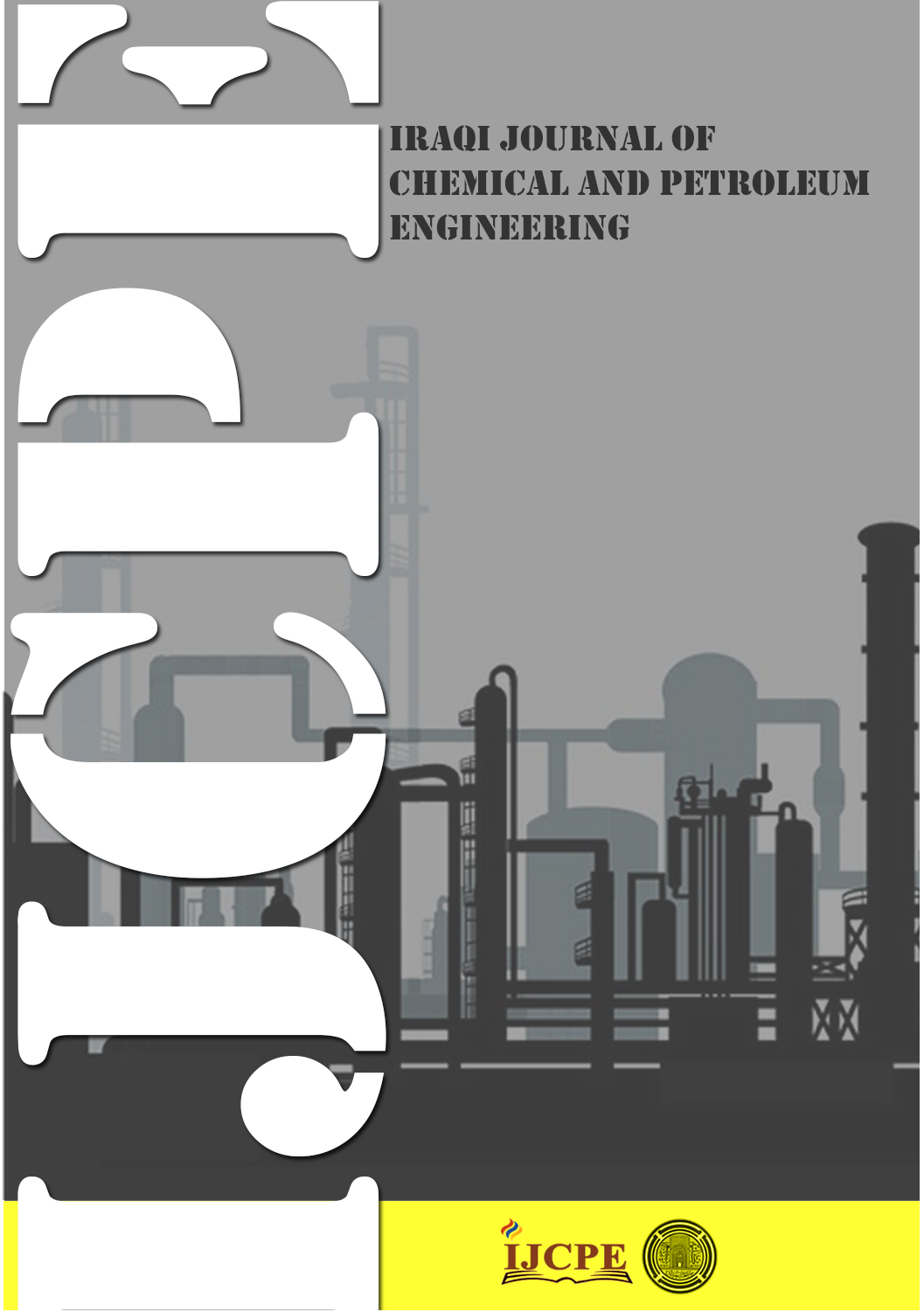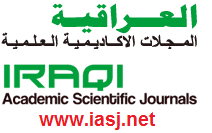Assess the maturity of source rocks and their oil potential in greater Kirkuk and surrounding area
DOI:
https://doi.org/10.31699/IJCPE.2025.2.12Keywords:
Source rocks; Jurassic period; Maturation indices; Sargelu formation; Total petroleum system API°Abstract
The region of Kirkuk and its surrounding areas, including (Baba, Jambour, Qara Chuq, Qaiyarah, Demir Dagh, Bai Hassan, Taq Taq, Makhul, Gilabat as well as southern Mosul and the cities of Erbil and Sulymania, are known as one of the oldest discovered oil fields in northern Iraq. This area presents a significant opportunity for further organic geochemical analysis to describe maturation zones and estimate economically generated hydrocarbons with particular reference to the Sargelu formation, to enhance hydrocarbons productivity. To assess the potential of these oil fields, it is essential to perform correlation, comparisons, and geochemical analyses of the data collected from exploration wells in the surrounding area. This approach provides key information and evidence related to the source rock precursors, maturation indices, and other physical properties. The depth of samples in this study ranges from 5,125 ft (1,562 m) to 10,866 ft (3,312 m). Notably, about 20% of these samples demonstrate Total Organic Carbon (TOC) values higher than 4%, with Rock-Eval Hydrogen indices (HI) between 100 and 600, corresponding to Tmax values within the oil generative window. The proven TOC value that has been measured is 16%, while the recorded HI value is 442, and the Tmax value of 439°C. The oil and gas accumulations of the Cretaceous and Tertiary in the Mesopotamian Basin and Zagros fold belt are overlying mature Jurassic source rocks, emphasizing the importance of vertical migrat
ion in hydrocarbon generation. Terpane and Sterane biomarker distributions as well as stable carbon isotope values were determined for oils in the region and potential Sargelu source rock extracts in order to determine dependable oil-to-source rock correlations. The remarkable API gravity, sulfur content, and biomarker ratio provide valuable insights into the source and maturity of various reservoirs. The high sulfur content and wide range of API gravity, from extra heavy to light, are achieved within the range of 8.5–43.3 API.
Received on 20/10/2024
Received in Revised Form on 15/02/2025
Accepted on 02/03/2025
Published on 30/06/2025
References
[1] R. J. Murris, “Middle East: stratigraphic evolution and oil habitat,” AAPG Bulletin, vol. 64, no. 5, 1980. https://doi.org/10.1306/2f918a8b-16ce-11d7-8645000102c1865d
[2] Z. R. Beydoun, “The Middle East: regional geology and petroleum resources,” The Middle East: regional geology and petroleum resources, 1989. https://doi.org/10.2307/635079
[3] T. K. Al-Ameri, A. A. Najaf, A. S. Al-Khafaji, J. Zumberge, and J. Pitman, “Hydrocarbon potential of the Sargelu formation, north Iraq,” Arabian Journal of Geosciences, vol. 7, no. 3, pp. 987–1000, Mar. 2014. https://doi.org/10.1007/s12517-013-0875-8
[4] S. Z. Jassim and M. Al- Gailani, ‘Hydrocarbon”, in Geology of Iraq, S. Z. Jassim and J. C. Goff, Eds., Prague, and Moravian Museum, 2006, pp. 232–250.
[5] S. Z. Jassim and J. C. Goff, “Geology of Iraq”, Czech Republic: Dolin, Prague and Moravian Museum, Brno, 2006.
[6] A. A. M. Aqrawi and B. Badics, “Geochemical characterisation, volumetric assessment and shale-oil/gas potential of the Middle Jurassic–Lower Cretaceous source rocks of NE Arabian Plate”, GeoArabia, vol. 20, no. 3, pp. 99–140, Jul. 2015. https://doi.org/10.2113/geoarabia200399
[7] J. Jackson and D. McKenzie, “Active tectonics of the Alpine–Himalayan Belt between western Turkey and Pakistan”, Geophysical Journal of the Royal Astronomical Society, vol. 77, no. 1, 1984. https://doi.org/10.1111/j.1365-246X.1984.tb01931.x
[8] K. Hessami, H. A. Koyi, and C. J. Talbot, “The significance of strike‐slip faulting in the basement of the Zagros fold and thrust belt”, Journal of Petroleum Geology, vol. 24, no. 1, pp. 5–28, Jan. 2001. https://doi.org/10.1111/j.1747-5457.2001.tb00659.x
[9] F. N. Sadooni, “Stratigraphy and petroleum prospects of Upper Jurassic carbonates in Iraq”, Petroleum Geoscience, vol. 3, no. 3, 1997. https://doi.org/10.1144/petgeo.3.3.233
[10] P. R. Sharland et al., “Arabian plate sequence stratigraphy”, Geo-Marine Special Publications 2, vol. 3, no. Chapter 4, 2001.
[11] H. Al-Shahristani and A. G. Hanna, “Bromine as an indicator of oil migration in northern Iraqi oil fields”, Geochim Cosmochim Acta, vol. 38, no. 8, pp. 1303–1306, 1974. https://doi.org/10.1016/0016-7037(74)90123-9
[12] F. N. Sadooni and A. A. M. Aqrawi, “Cretaceous sequence stratigraphy and petroleum potential of the Mesopotamian basin, Iraq”, in Middle East Models of Jurassic/Cretaceous Carbonate System, SEPM (Society for Sedimentary Geology), 2000, pp. 315–334. https://doi.org/10.2110/pec.00.69.0315
[13] J. Brooks and D. Welte, “Advances in petroleum geochemistry”, Academic Press, New York, vol. 1. Elsevier, 1984.
[14] B. P. Tissot and D. H. Welte, “Petroleum formation and occurrence”, 1984. https://doi.org/10.1007/978-3-642-87813-8
[15] R. V. Tyson,”Sedimentary Organic Matter”, Dordrecht: Springer Netherlands, 1995. https://doi.org/10.1007/978-94-011-0739-6
[16] B. Dahl, J. Bojesen-Koefoed, A. Holm, H. Justwan, E. Rasmussen, and E. Thomsen, “A new approach to interpreting Rock-Eval S2 and TOC data for kerogen quality assessment”, Org Geochem, vol. 35, no. 11–12, pp. 1461–1477, Nov. 2004. https://doi.org/10.1016/j.orggeochem.2004.07.003
[17] J. M. Hunt, “Petroleum geochemistry and geology”, 2nd ed. New York, 1995.
[18] T. Al-Ameri, A. Al Ahmed, J. Zumberge, and S. Brown, “Petroleum Potential and Oil Correlation of the Middle Jurassic Sargelu Formation, Iraq”, in Annual Meeting of AAPG, Bahrain: American Association of Petroleum Geologists, Jan. 2005.
[19] I. M. J. Mohialdeen, M. H. Hakimi, and F. M. Al-Beyati, “Biomarker characteristics of certain crude oils and the oil-source rock correlation for the Kurdistan oilfields, Northern Iraq”, Arabian Journal of Geosciences, vol. 8, no. 1, pp. 507–523, Jan. 2015. https://doi.org/10.1007/s12517-013-1228-3
[20] J. K. Pitman, D. Steinshouer, and M. D. Lewan, “Petroleum generation and migration in the Mesopotamian Basin and Zagros fold belt of Iraq: Results from a basin-modeling study”, GeoArabia, vol. 9, no. 4, 2004. https://doi.org/10.2113/geoarabia090441
[21] N. Yalçın Erik, O. Özçelik, and M. Altunsoy, “Interpreting Rock–Eval pyrolysis data using graphs of S2 vs. TOC: Middle Triassic–Lower Jurassic units, eastern part of SE Turkey”, J Pet Sci Eng, vol. 53, no. 1–2, pp. 34–46, Aug. 2006. https://doi.org/10.1016/j.petrol.2006.03.001
[22] K. E. Peters, “Guidelines for evaluating petroleum source rock using programmed pyrolysis.”, American Association of Petroleum Geologists Bulletin, vol. 70, no. 3, 1986. https://doi.org/10.1306/94885688-1704-11d7-8645000102c1865d
[23] K. E. Peters and M. R. Cassa, “Applied source rock geochemistry”, The petroleum system - from source to trap, 1994. https://doi.org/10.1306/M60585C5
[24] K. E. Peters, C. C. Walters, and J. M. Moldowan, The Biomarker Guide. Cambridge University Press, 2004. https://doi.org/10.1017/CBO9781107326040
[25] W. S. El Diasty, S. Y. El Beialy, A. Q. Mahdi, and K. E. Peters, “Geochemical characterization of source rocks and oils from northern Iraq: Insights from biomarker and stable carbon isotope investigations”, Mar Pet Geol, vol. 77, 2016. https://doi.org/10.1016/j.marpetgeo.2016.07.019
[26] C. A. Bacon et al., “The petroleum potential of onshore Tasmania: a review”, Geological Survey Bulletin, vol. 71, p. 93, 2000.
[27] J. J. Sweeney and A. K. Burnham, “Evaluation of a simple model of vitrinite reflectance based on chemical kinetics”, American Association of Petroleum Geologists Bulletin, vol. 74, no. 10, 1990. https://doi.org/10.1306/0c9b251f-1710-11d7-8645000102c1865d
[28] W. L. Orr, “Kerogen/asphaltene/sulfur relationships in sulfur-rich Monterey oils”, Org Geochem, vol. 10, no. 1–3, 1986. https://doi.org/10.1016/0146-6380(86)90049-5
[29] S. Z. Jassim and T. Buday, “Tectonic framework”, in Geology of Iraq, S. Z. Jassim and J. C. Goff, Eds., Prague and Moravian Museum, Brno: Dolin, 2006, ch. 4, p. 341.
Downloads
Published
Issue
Section
License
Copyright (c) 2025 The Author(s). Published by College of Engineering, University of Baghdad.

This work is licensed under a Creative Commons Attribution 4.0 International License.













